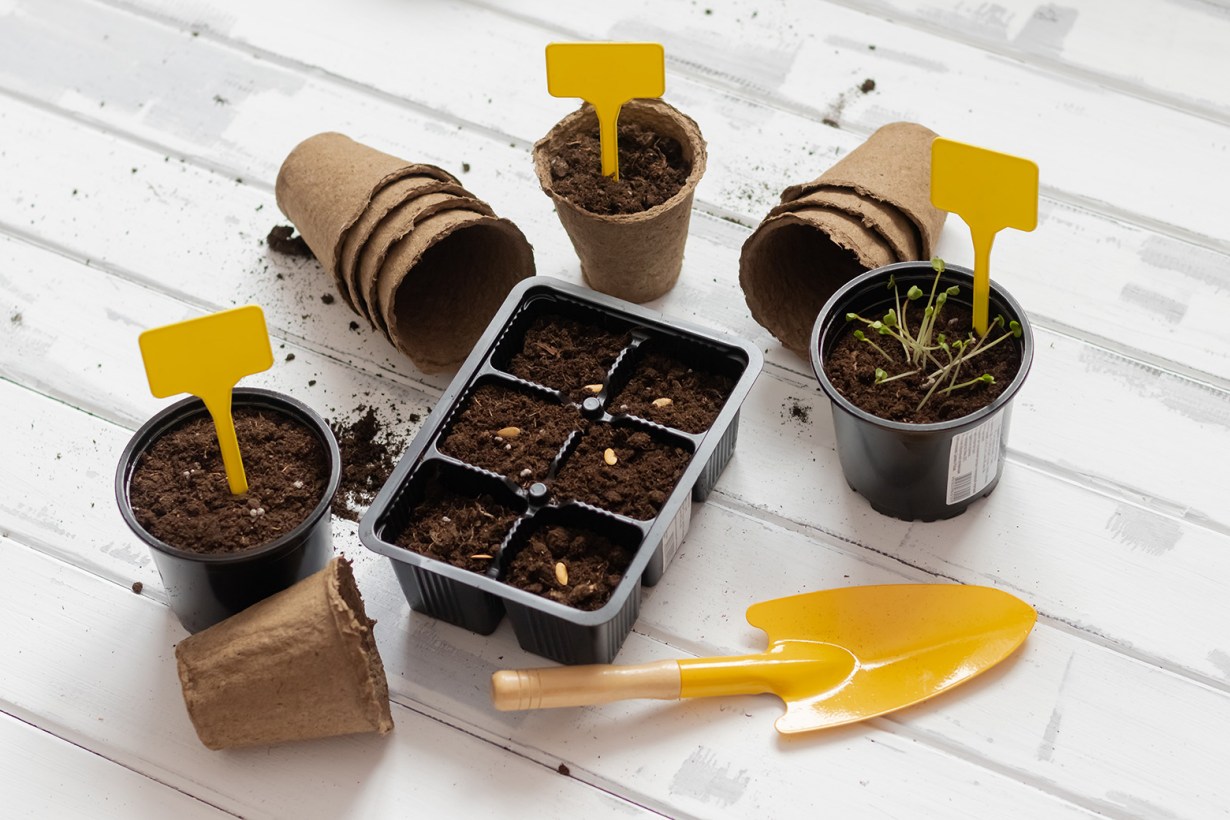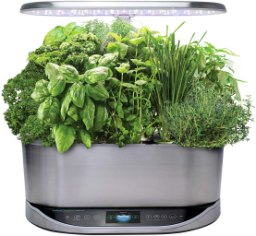Buying guide for best indoor garden kits
An indoor garden kit is a great way for both experienced and novice gardeners to test their green thumb in the comfort of home. A kit is a must for apartment dwellers who don’t have access to outdoor garden space, as well as for gardeners who live in colder climates and typically spend the winter months just dreaming of the greenery they can grow. Regardless of one’s experience, an indoor garden kit can be a great pastime, and it has a very real upside: you get to eat what you grow.
But getting to that point will take a bit of research. Indoor garden kits have many variations, with different types of kits available and included features such as hydroponic controls, lighting, and seeds. Each home gardener has different needs and expectations, and it’s always helpful to know your options before making a purchase. A good shopping guide and some recommendations can help.
How to buy the best indoor garden kit
Types of indoor garden kits
While these kits are available in a variety of shapes and sizes, they all essentially fall into two categories: kits that use dirt and kits that don’t (hydroponic).
Dirt: These indoor garden kits tend to be simple and inexpensive, often consisting of pots, dirt, and a few other accessories you need to start a garden indoors.
Hydroponic: These indoor garden kits dispense with dirt altogether and rely on a nutrient-rich water system to feed plants. These systems can be fairly simple, sometimes just a rudimentary water pump, but many have a fair number of bells and whistles that can include grow lights, sensors, and even WiFi connectivity. Hydroponic systems usually are larger and can cost considerably more than kits that use dirt.
What can I grow in an indoor garden kit?
Quite a bit, actually. While smaller vegetables and herbs do well in these types of gardens, larger vegetables like peppers and cherry tomatoes can also thrive. Small flowers and fruits like strawberries also can be grown with a little patience and care.
Some indoor garden kits are geared toward specific types of plants, such as herbs or microgreens, while others have modes programmed into them, so you can use the kit’s settings to create favorable conditions for whatever you want to grow.
Durability
A durable indoor garden kit will last for years. While it can be difficult to gauge a kit’s durability when buying it online, there are a few factors to note that can make a difference.
If you’re buying a kit with dirt and pots, try to choose pots made of ceramic or a similar material. Hydroponic kits are mostly plastic, but manufacturers that offer a lengthy warranty are demonstrating that they have faith in their product, which usually indicates that you should too. Some more expensive hydroponic kits are made of high-quality materials like stainless steel.
Appearance
An indoor garden kit could end up being a focal point of any room in which you place it. As such, it should be aesthetically pleasing. These kits typically aren’t available in a range of colors, but there is enough variety in them that you should be able to find one that fits your personal taste or the décor of the room.
To add a relaxing vibe to your garden, consider installing an indoor fountain nearby.
STAFF
BestReviews
Features to look for in indoor garden kits
Hydroponic controls
As mentioned, hydroponic indoor garden kits can incorporate several features that you won’t find in kits that use dirt and pots. While the availability of these features varies from kit to kit, some of the more common include the following:
Water level indicator: Water is key, so this is fairly standard for hydroponic units. This indicator is usually in the form of a gauge that you monitor or a sensor that alerts you when the water level is low.
Modes: With preprogrammed modes, you can easily adjust the lighting and other settings to grow different types of plants.
Circulation timer: If you aren’t really into the sound of running water when you’re trying to sleep, pick up a kit that lets you determine when the pump is on or off.
WiFi/smart speaker compatibility: While fairly rare in these kits, network access allows you to more easily monitor and control various elements. Some kits can also sync up with apps for monitoring and control.
Lighting
Proper lighting is an important part of any indoor garden, and most of these kits include some type of grow light. The light of choice here is an LED grow light, which provides full-spectrum light while also being energy efficient. Lights in these kits typically range from 20 to 50 watts and can include a range of colors.
If you plan to grow a variety of different sizes of plants, choose a kit that has the ability to adjust the height of the grow bulb. You should also choose a kit that automatically dims the light, which is a key way to mimic natural daylight during the outdoor growing season.
Seeds
Many indoor garden kits include an assortment of seeds, although you might be better off buying your own. Your results depend on the seeds, so you should make sure that you’re getting the best seeds you can. If you do use the seeds that come with the kit, be sure that they meet any specific requirements you might have, such as being organic or non-GMO.
Growing guide
You might consider yourself a competent gardener, but when you move the garden inside, you’re in a whole new world that has its own unique gardening challenges. A thorough growing guide included with a kit can really help here, not only in terms of how to use the kit but also by providing you with general pointers on how to succeed at indoor gardening. And needless to say, a quality guide is indispensable if you’re relatively new to any type of gardening.
DID YOU KNOW?
The indoor gardens with the largest collection of plants in the world are the Royal Botanic Gardens, Kew, in the United Kingdom. They include ten climate zones that visitors can walk through.
STAFF
BestReviews
How much do indoor garden kits cost?
Inexpensive
Indoor garden kits start at around $15 to $30. In this price range, you’ll find simple kits with dirt and (often biodegradable) pots. These kits typically produce small yields and offer few or no advanced features or lighting.
Mid-range
Most indoor garden kits cost $30 to $80. You can find more robust kits, usually with pots made of ceramic or another durable material for use through multiple seasons. Simple hydroponic kits can also be found in this range. These usually include lighting but few other advanced features.
Expensive
Indoor garden kits that cost $80 to $200 and more are usually large hydroponic units capable of producing a much larger harvest. Designed for serious gardeners, these usually include a variety of advanced features like WiFi and controls for the pump and lighting.
Pests attack indoor gardens too. Keep an eye out for any insect activity and deal with it at the first sign of trouble.
STAFF
BestReviews
Tips
- Buy a grow light. The right light is critical to your indoor garden’s success. Of all the factors that limit an indoor garden in the winter, inadequate lighting is the biggest. If your kit didn’t ship with a light, consider picking up an LED grow light. Even if you have a spot that receives full sunlight, you should still consider using a grow light. Dirty windows can block vital light from reaching your plants. And many new windows are designed to block some of the light spectrum.
- Consider an indoor garden plus aquarium. While they’re less common, aquaponic indoor garden kits are unique in that they combine plants with live fish. In these systems, the fish live in the water that’s used to grow the plants, which are fortified by the fish waste.
- Choose the right location. Not every home has the space, but it’s ideal to set up your indoor garden near the kitchen. Not only will this likely be the ultimate destination for everything you grow, but it’s also a central location that people visit throughout the day, allowing you to keep a close eye on your garden’s progress.
- Choose the right soil. While many of these kits include some form of compressed peat-based soil, the more environmentally friendly option is organic soil mix.
- Try a supersized kit. If you’re ready to take your indoor gardening to the next level, an indoor grow tent is useful for starting seeds and growing herbs and vegetables through the winter months.
FAQ
Q. Is an indoor garden kit difficult to use?
A. It can be, depending on the type of kit you choose and your skill as a gardener. Some hydroponic kits can be a bit intimidating, but many of the more advanced ones include an array of sensors and other tools that simplify the process. Still, novice gardeners might face a steep learning curve when attempting to plant and maintain their first crop.
Kits that rely on simple pots and dirt are the easiest to get up and running, although they require good monitoring going forward. A kit that includes a detailed instruction guide that covers the kit and offers general tips for indoor gardening success is something to look for.
Q. Are there vegetables that won’t grow indoors?
A. While these kits work great for herbs and some vegetables, many vegetables do poorly when grown indoors. These include pumpkins, squash, and other vegetables that grow on vines and require a fair amount of room. Root vegetables like carrots and potatoes require a lot of dirt, which can be a problem for an indoor garden. Some vegetables that like the cold, such as cauliflower, broccoli, kale, and cabbage, also grow poorly indoors.
Q. Does an indoor garden kit take up much space?
A. Typically, no. A small kit that uses dirt and pots can usually be kept on a windowsill. While you can harvest more food from a larger hydroponic container garden, it will take up more space. Some larger kits require a few square feet of space, which isn’t huge, but it can seem that way in a small apartment. If you have limited indoor space, measure the area you have for an indoor garden kit before ordering one.






















